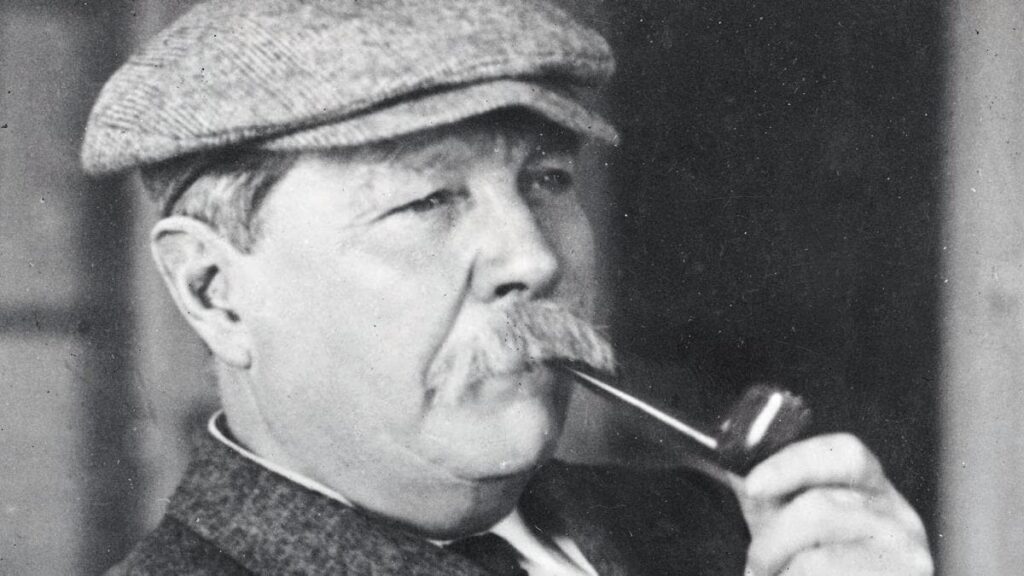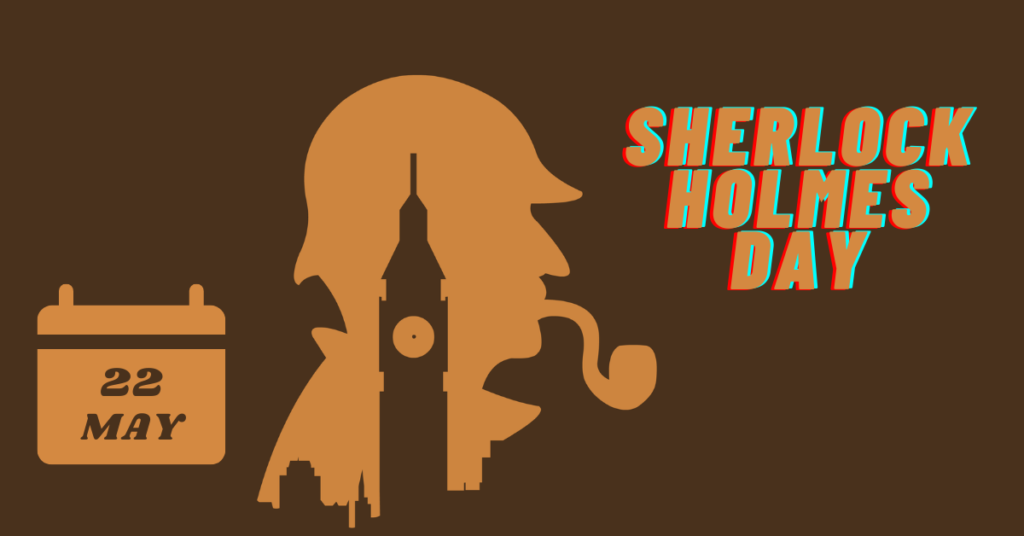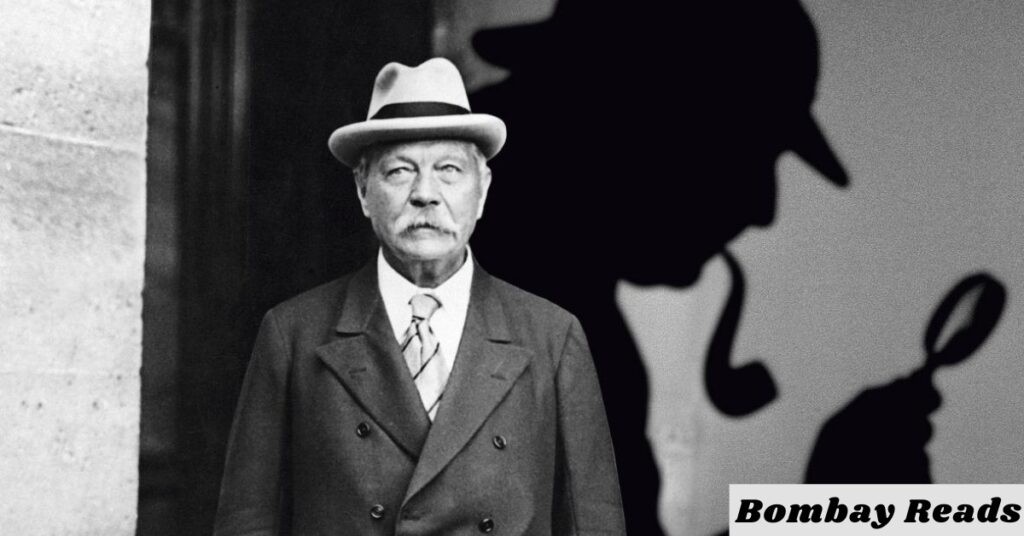Growing up in the ghetto of Mumbai, I was personally never good or even interested in studies. Usually spending my time as an ‘outstanding’ student, I was more into sports than academia. Reading books was the least important for me, and reading the ones out of the syllabus was out of the question. Regardless of my lack of appetite for books, I had to read the books, especially the languages books – English, Marathi, and Hindi. While I didn’t want to read, there were some stories that struck me, so hard that I still remember them.
One of such stories was The Blue Carbuncle, a story that we had in our English syllabus of STD IX or X. I precisely remember the story and it was my first dose of detective fiction, a genre that I have grown to love. The name ‘Sherlock Holmes’ stayed with me, and so did that of its creator, Sir Arthur Conan Doyle. It wouldn’t be before more than a decade after high school that would get my hands on Sir Arthur’s first novel, and my second detective shot, A Study in Scarlet.
Today, on the birthday of the great author and creator of Sherlock Holmes, I hereby submit that nothing has fascinated me more than a sudden twist in any of the four Sherlock Holmes novels. And to pay a tribute to the legendary master of mystery, here is why Sir Arthur Conan Doyle is one of my favourite authors.
Brief Introduction

Sir Arthur Conan Doyle was born on May 22, 1859, in Edinburgh, United Kingdom. He was a physician by profession, which was one of the reasons for the detailed depiction of medicine and human anatomy in his works. He was knighted and given the rank of Knight Bachelor by King Edward VII in the year 1902, probably as a result of his non-fiction paper, The War in South Africa: Its Causes and Conduct.
It is also worth noting that Sir Arthur had an active political life. He was a strong advocate of Justice, and he took it to himself to investigated closed cases, including the one in which a man was wrongly accused of penning threatening letters and mutilating animals. And he was very successful at it. Likewise, Sir Arthur delivered dozens of lectures on spiritualism since he had a longstanding interest in mysticism.
What all of this suggests is the various aspects of the complex life of the author. His engagements with scientists, social activists, academicians, politicians, advocates, and people from other walks of life are heavily portrayed in his works. He was also the founding member of the Hampshire Society for Psychical Research in 1889, and four years later, joined the Society of Psychical Research based in London.
Apart from the four brilliant novels of the Sherlock Holmes series, he also wrote about 56 short stories having the phenomenal detective as the central character. However, not many know that Sir Arthur has authored fictional works that don’t involve Sherlock Holmes, like The Mystery of Cloomber, Narrative of John Smith, The Lord World, The White Company, and Sir Nigel.
Sir Arthur passed away on July 07, 1930, leaving behind a legacy of masterful works that continue to fascinate minds even in the age of artificial intelligence.
The Art of Building a Character
Building a character is Sir Arthur’s big strength. Every one of those who are even remotely into English novels or cinema have heard the names Sherlock Holmes, and 221B Baker Street is probably the most famous address in crime fiction. In the very first introduction of Holmes, Sir Arthur manages to establish the aura of invincibility around him, which is carried up to the last novel in the series, The Valley of Fear.

But it doesn’t just stop at the detective. Every major character in each of the four novels is quite intriguing. Take the character of Jack Stapleton, for instance, from The Hound of Baskervilles. While you do notice that there’s something weird about the guy, you can never think that he could be the cold-blooded, shrewd criminal that he turned out to be. The way he is portrayed seems to be like an insecure and desperate scientist at the best. Likewise, Tonga from The Sign of Four comes across as a bloodthirsty savage. It is so chilling that when Dr Watson sees him for the first time in the boat, the reader can feel the intimidation he exudes.
And no aspect of the Sherlock Holmes series is complete without Dr John Watson, the ultimate and unlikely friend of the detective. His character grows significantly through the series, and he almost single-handedly carries The Hound of Baskervilles for the most part. If it wasn’t for Holmes, Dr Watson himself could’ve been a remarkable detective, even if not as successful.
The Power of Backstories
With the exception of the detective himself, the biggest fascination in all the four novels was their backstories. Arthur Conan Doyle loved to write about the colonies, having to spend a good portion of his life in some of them, which clearly reflects in the stories. His deep understanding of North India, particularly the Andaman prison and the civil uprisings in Agra and Cawnpore, was quite remarkable.
But my favourite backstory was in The Valley of Fear. For all the days that it took me to read it, I felt as if I was in the coal mining town surrounded by grease bars and clouds of smoke. It actually appeared to be something like the town picturized in the iconic movie Gangs of New York. The entire story was so exhilarating and unpredictable, that I had my jaw touching the earth during the climax. Such is the genius of Sir Arthur Conan Doyle.
Hence, the author creates two parallel universes in each of the novels, maybe except in The Hound of Baskervilles, where there’s a Sherlock in the present sniffing bloodstains and catching the killers, and there’s also a world where Sherlock nowhere to be found. Each of these worlds is terrific individually, and when you combine them together, you have a masterpiece in your hand each time.
Subtextual Human Emotions
While most crime fiction of the detective genre revolves around mystery murders, flawed relationships, betrayed friendships, and money in various forms, Sir Arthur Conan Doyle also includes common human emotions in subtext. These emotions range from sadness and death to revenge and greed. In the first of the four novels, A Study in Scarlet, the backstory of Jefferson Hope is one exemplary portrayal of emotions. Reading it was one of those moments that you simply want to keep quiet for the next couple of days.
Similar experiences can be found throughout the four novels, especially during the closing pages of the final novel, The Valley of Fear. One might argue that the depiction of emotions is a part of fictional entertainment. While it is true, Sir Arthur brings much more than mere emotions to the table. In The Sign of Four, for example, he showcases the cruelty, chaos, and commotion in the colonies.
The Vermissa Valley, in The Valley of Fear, is not only an ore mining, heavily polluted town but also an example of the corruption and crime prevalent in the United States during the 19th century. It showcases the corruption in the administrative department, the hands of the mafia gripping the government, the helplessness of the common innocent public, and the failure of the judicial system. Similarly, the backstory in A Study in Scarlet is also an example of how self-proclaimed godmen manipulate the common populace and establish cult enterprises filled with corruption, deceit, and malice.
In fact, symbolically, the current condition of many countries of the “civilized” world is quite akin to what we saw in the two novels back-storied in America. The only difference is that the mafia is replaced with corporate houses and politically parties replace the religious cults.
Reading More of Doyle – A Journey Worth Taking
In this entire article, I discuss the author’s works relying only on the four novels. And that’s because they are the only works of Sir Arthur that I managed to get my hands on. However, I have decided to explore Sherlock Holmes short stories, though that would take time. That said, I am more interested in delving into Sir Arthur’s works that don’t involve Sherlock Holmes. I want to find out whether the thing is all about the character, or Arthur Conan Doyle is a true magician – a journey worth taking!

Noman Shaikh is the co-founder and editor-in-chief of Bombay Reads. He grew up in Mumbai, a city he loves more than any other, and currently works as a content consultant. His expertise lies in creating high-quality academic and marketing content in the form of blogs, articles, op-eds, etc. Noman has worked with reputed brands, including Economic Times (through Spiral Media), Coinbase (through MattsenKumar), AdEngage, Della Group, GBIM Technologies, VAP Group, etc. For his published portfolio, click here. Contact Noman on noman@bombayreads for engagement.

